SpaceX successfully launched its Falcon 9 rocket Saturday, November 26, 2022, ferrying new science investigations, supplies, and equipment for the crew at the International Space Station (ISS). Against the backdrop of the Artemis 1 launch, the new payloads traveling aboard SpaceX’s 26th commercial resupply mission (CRS) include an MIT Media Lab project that could help advance large-scale AM construction in space.
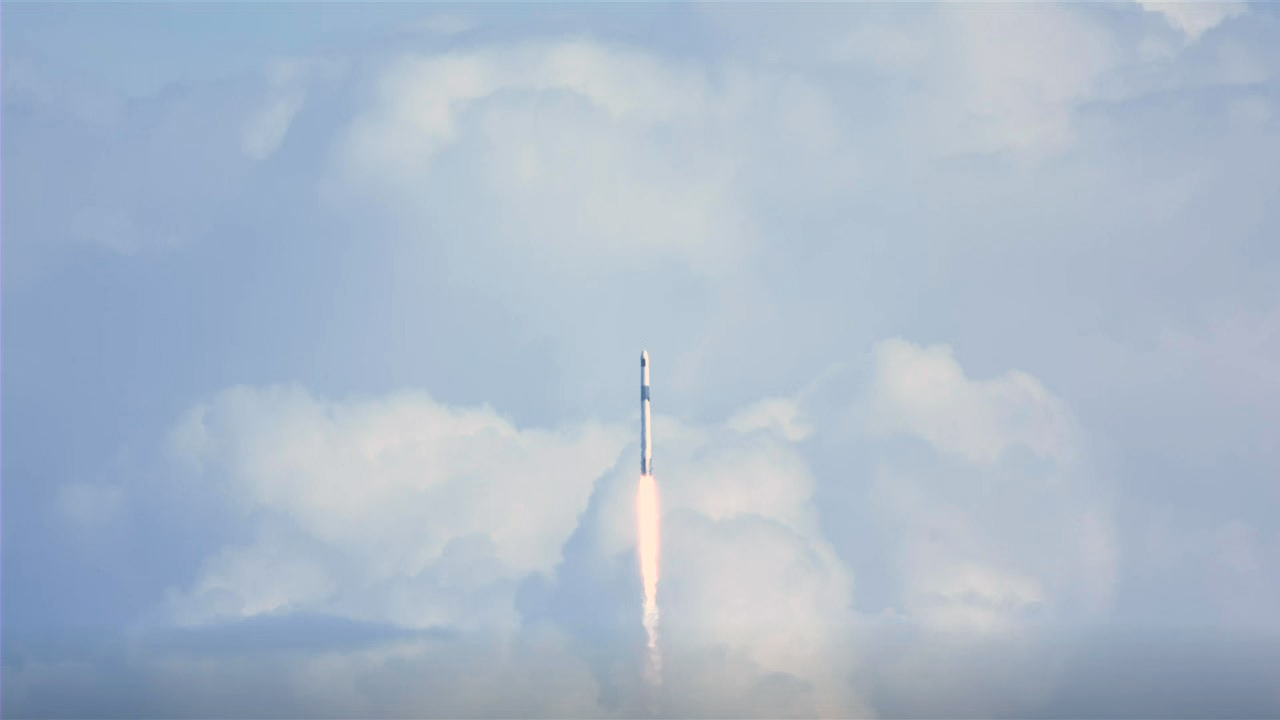 SpaceX’s Falcon 9 rocket, with the Dragon spacecraft atop, soars into the sky from NASA’s Kennedy Space Center. Image courtesy of NASA.
SpaceX’s Falcon 9 rocket, with the Dragon spacecraft atop, soars into the sky from NASA’s Kennedy Space Center. Image courtesy of NASA.Packed inside BlackBox 2, a remotely commanded commercial Space Station platform developed by in-space service provider Nanoracks to allow for multiple experiments to occur simultaneously, the AM investigation called Extrusion blasted into space with several other experiments from the MIT Media Lab that were sponsored by the ISS National Lab.
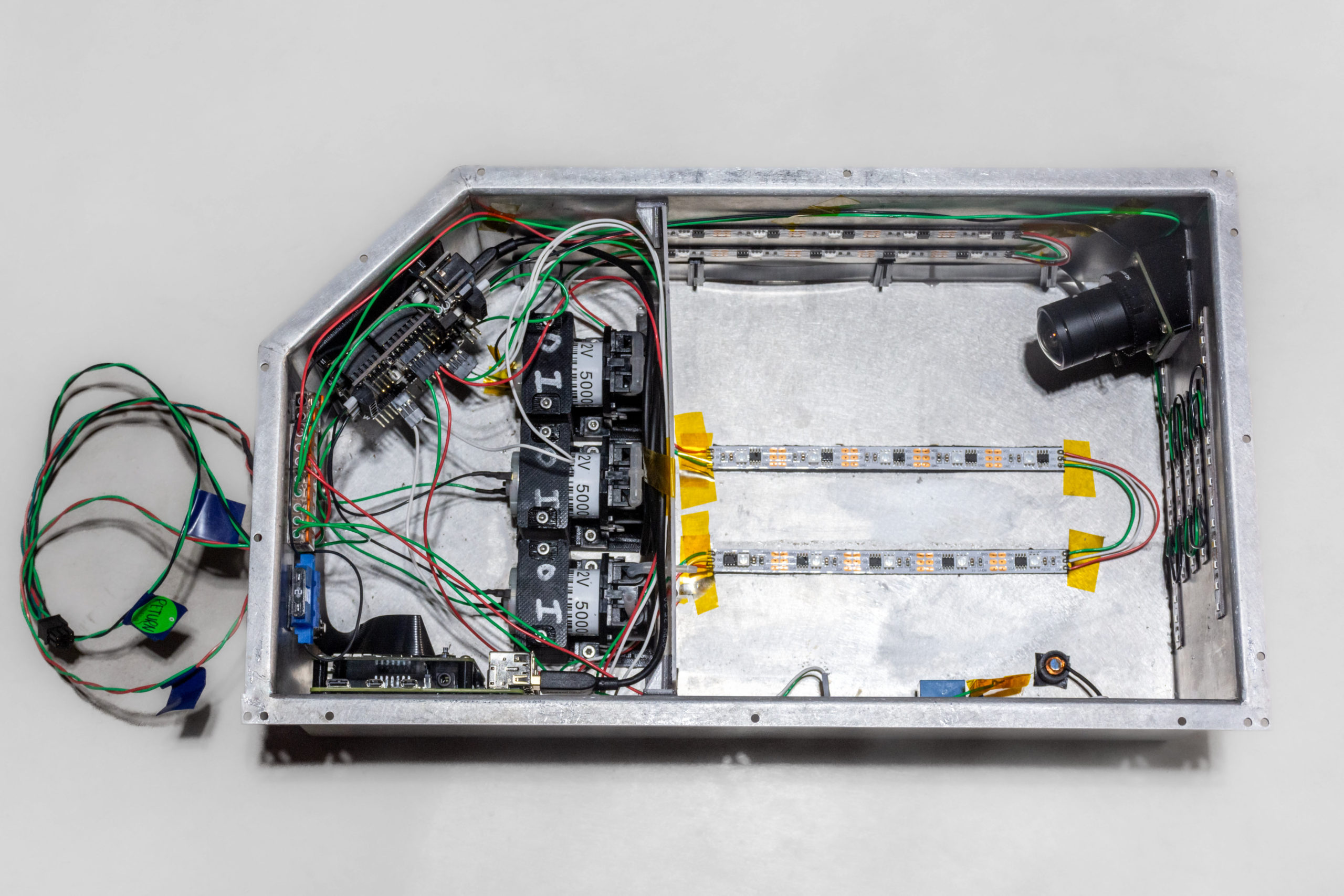 An inside view of the MIT Space Exploration Initiative Extrusion payload, shown in preparation for flight prior to sample loading. This technology demonstration tests new methods for rapid extrusion and UV curing of liquid resin shapes in microgravity. Image courtesy of the MIT Space Exploration Initiative.
An inside view of the MIT Space Exploration Initiative Extrusion payload, shown in preparation for flight prior to sample loading. This technology demonstration tests new methods for rapid extrusion and UV curing of liquid resin shapes in microgravity. Image courtesy of the MIT Space Exploration Initiative.Through the new AM investigation, researchers will demonstrate the extrusion of liquid resin into custom forms in the microgravity environment to create geometries that cannot be made on Earth. The payload architecture itself is comprised of three pumps that inject photocurable resin into pre-made flexible forms while a camera captures footage of the process.
Commenting on the project, lead researcher and Director of the MIT Media Lab Space Exploration Initiative Ariel Ekblaw said, “this experiment leverages the microgravity environment to extrude both common and complex branching shapes. Our method reduces the time to produce key parts needed for daily mission use, and it may support future space construction of large structures like trusses and antennae. The Extrusion investigation builds on our additive manufacturing and in-space self-assembly workstreams.”
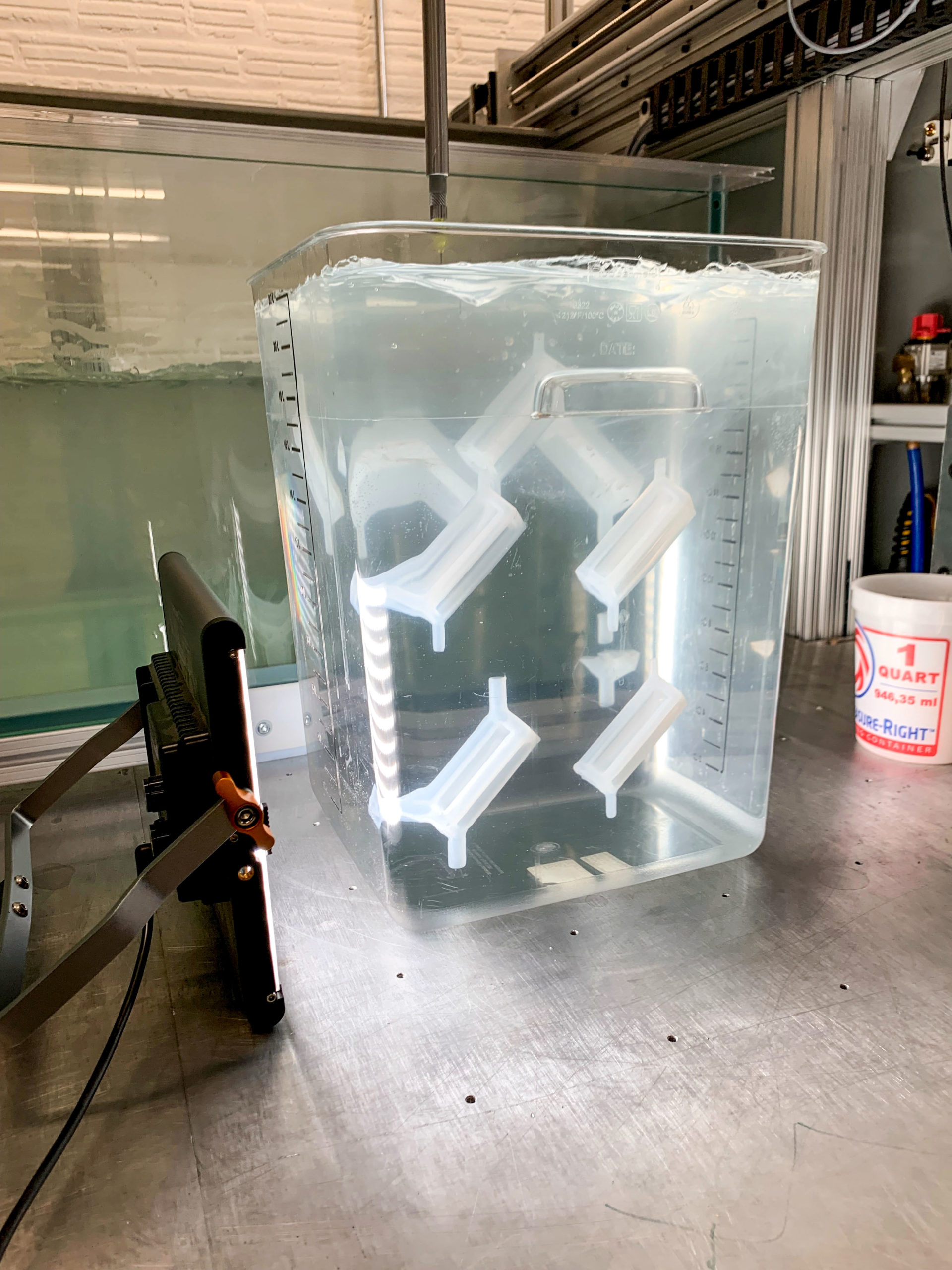 The silicone skins contain and shape the liquid extrusion process during the MIT Extrusion experiment in orbit. Image courtesy of Rapid Liquid Printing/MIT Media Lab.
The silicone skins contain and shape the liquid extrusion process during the MIT Extrusion experiment in orbit. Image courtesy of Rapid Liquid Printing/MIT Media Lab.An avid teacher of 3D printing at MIT, Ekblaw explains that in a microgravity environment, extrusions into free space that would typically sag can proceed unimpeded, allowing for the creation of structures that could not be produced in a gravity environment. On Earth, gravity deforms large objects, such as the beams used in large-scale construction. Traditional additive manufacturing processes, especially those that use liquid resin as the feedstock, are constrained by gravity. Instead, space’s weightlessness enables the fabrication of longer and thinner structures without this deformation.
If successful, the Extrusion project could help lay the groundwork for additive manufacturing of more complex in-space structures, including space stations, solar power arrays, telescopes, and industrial equipment to support future space exploration.
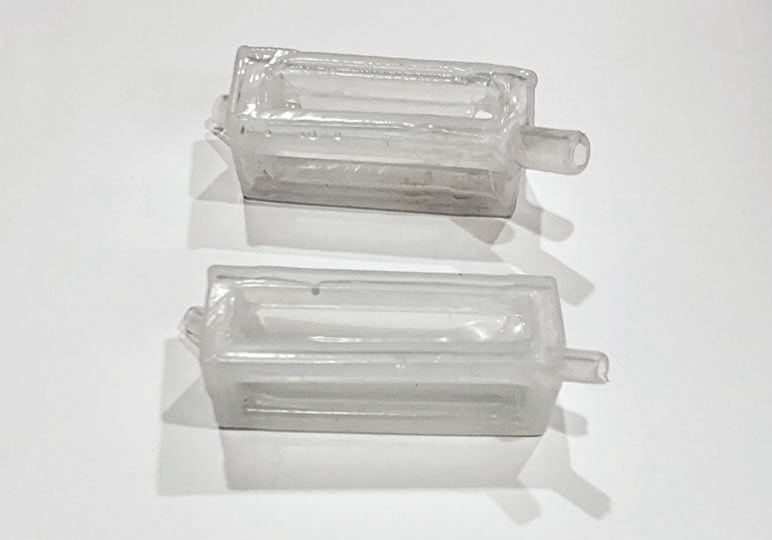 An example of the silicone skins that will contain and shape the liquid extrusion process during the MIT Extrusion experiment in orbit. Image courtesy of Rapid Liquid Printing/MIT Media Lab.
An example of the silicone skins that will contain and shape the liquid extrusion process during the MIT Extrusion experiment in orbit. Image courtesy of Rapid Liquid Printing/MIT Media Lab.Furthermore, considering that launching large structures in one piece is not feasible since they must be built to withstand much greater forces on Earth and during launch than they experience in space, these pieces could be created in orbit using Extrusion technology and shipped back for use on Earth.
Prior to being launched to the ISS, the team led by Ekblaw tested the Extrusion payload on a parabolic flight in May 2021. Once on board the ZeroG aircraft, the team successfully demonstrated that the technology tested new methods for rapid extrusion and UV curing of liquid resin shapes in microgravity.
The early version of the hardware for Extrusion used two feedstocks, a small-gauge flexible wire and a photocurable resin. It extruded them both through a nozzle assembly which simultaneously bent the wire into a 3D shape and coated it with an even layer of the resin. According to the original project excerpt, just after the nozzle, an array of UV LED emitters were positioned to cure the resin, both hardening it and bonding it to the wire. Once the entire shape was created, a cutting mechanism cleaved the coated wire just after the nozzle exit to allow for the creation of another shape.
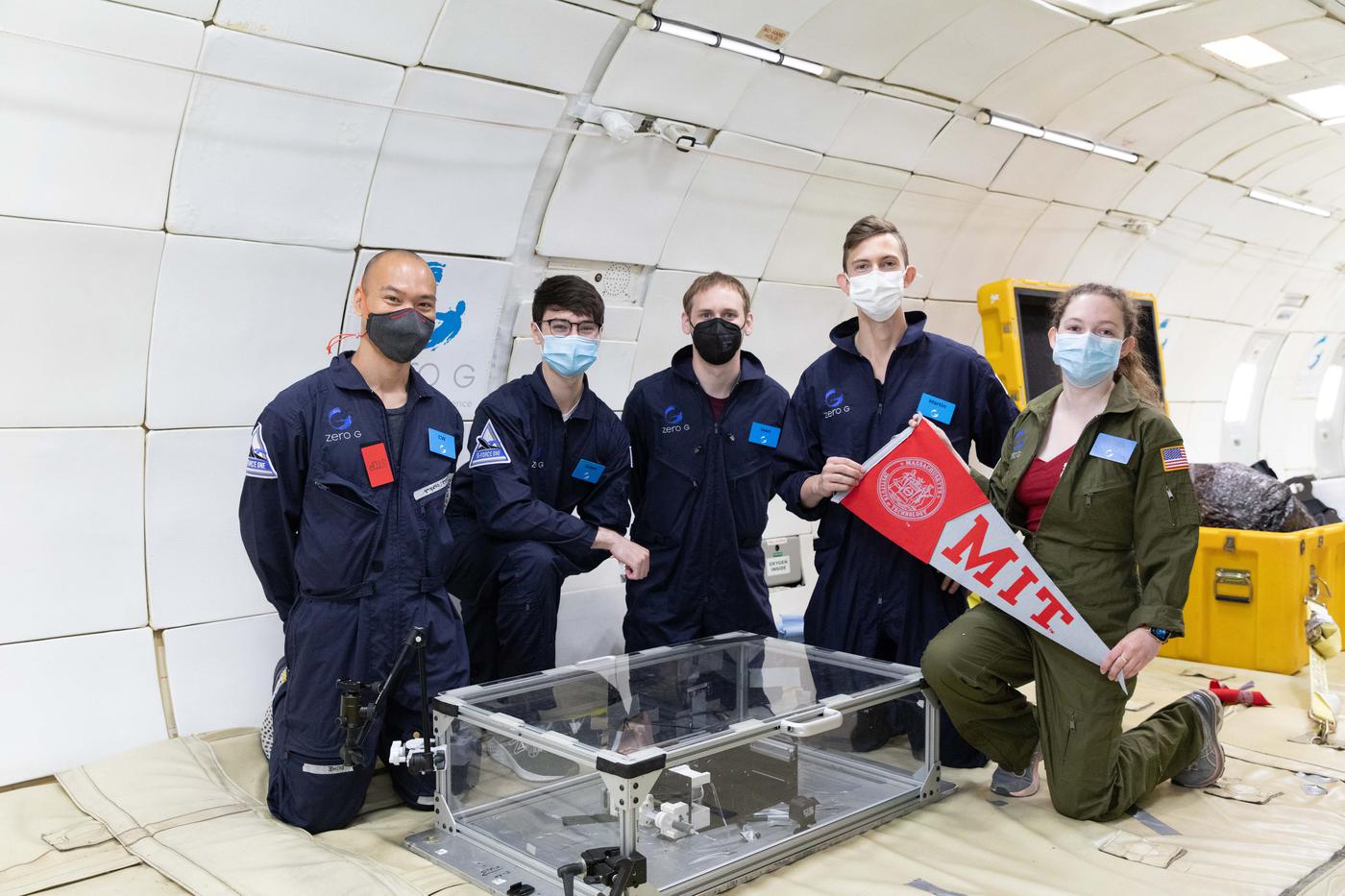 Team members (from right to left) Che-Wei Wang, Aiden Padilla, Sean Auffinger, Martin Nisser, and Ariel Ekblaw pose with the experiment installed on the Zero-G aircraft. Image courtesy of Steve Boxall/ZERO-G.
Team members (from right to left) Che-Wei Wang, Aiden Padilla, Sean Auffinger, Martin Nisser, and Ariel Ekblaw pose with the experiment installed on the Zero-G aircraft. Image courtesy of Steve Boxall/ZERO-G.Cutting-edge 3D printing experiments, like this one from MIT researchers, are routinely sent to the ISS for testing. In the last month, another resupply spacecraft – this one operated by Northrop Grumman – returned Techshot’s highly publicized bioprinting platform, better known as the BioFabrication Facility, to the microgravity laboratory with new capabilities to further human tissue printing research. While last February, Cornell University tested software that enables 3D printing on the space station. On the ground, the space agency is also supporting a myriad of additive manufacturing and bioprinting projects that will contribute to the growing space ecosystem, such as the “replicator” 3D printer, which aims to produce cartilage in space.
Also supporting a range of microgravity and lunar research projects across science, engineering, art, and design, MIT Media Lab’s Space Exploration Initiative is on a mission to “build out the technologies of our sci-fi space future while keeping our innovations and team as open and accessible as possible.” This idea of democratizing access to space exploration will allow new disciplines and technologies (like AM) to deliver more experiences in space.
Through this initiative, MIT researchers are creating and deploying space innovations that envision a bold and culturally rich “new space age,” from astro-bacteria wearables and open-access CubeSat constellations to musical instruments for space voyages, floating space habitats, and advanced zero-gravity 3D printing.
Subscribe to Our Email Newsletter
Stay up-to-date on all the latest news from the 3D printing industry and receive information and offers from third party vendors.
You May Also Like
3D Printed Heat Spreader Could Improve Efficiency of Electronics
The low-hanging fruit for decarbonization has long been improving the efficiency of existing systems, hence the justification for LED lights and ENERGY STAR certified appliances. While such minor moves are...
3D Printing News Unpeeled: Marine Gearboxes, 3D Printed Motors and $1.7 Million in Seed Funding
UK based Equipmake just released their Ampere-220 e-axle system. The system, which is meant for high performance electric cars, was similar to one released on the Ariel HIPERCAR. It has...
CEAD Unveils 36-Meter-Long 3D Printer for Abu Dhabi’s Al Seer Marine
CEAD, a Dutch original equipment manufacturer dedicated to large-format 3D printers, has unveiled what it claims to be the world’s largest robotic arm-based 3D printer. At 36 meters long and...
3D Printed Biocomposites Could Help Reduce Marine Plastic Pollution
Concerns about the impact of plastic litter and microplastics in the oceans are at the forefront of environmental study. For decades, the marine environment has suffered from the degradation of...




































